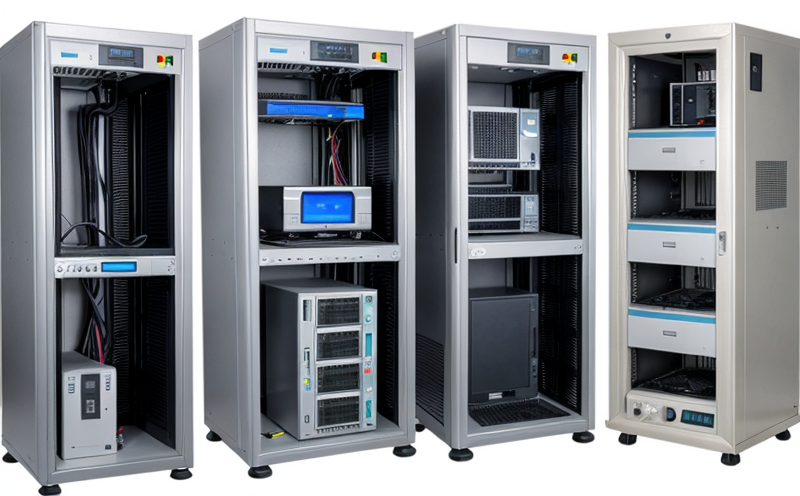IEC 61000 4-11 Voltage Dips and Interruptions Testing for ICT Equipment
The IEC 61000 family of standards is designed to address electromagnetic compatibility (EMC) issues in electrical and electronic equipment. IEC 61000-4-11 specifically focuses on voltage dips, short interruptions, and voltage unbalance events that can disrupt the functionality of Information and Communications Technology (ICT) equipment. These events are common occurrences in power distribution networks and can lead to data loss, system crashes, or even permanent damage to sensitive electronic components.
The standard provides a framework for testing ICT equipment to ensure it can withstand such disturbances without failure. It covers both the transient voltage dips and short interruptions that occur due to faults in the supply network, as well as the more subtle effects of unbalance in three-phase systems. The test methods outlined in IEC 61000-4-11 are essential for manufacturers, quality managers, and compliance officers who need to ensure their products meet international standards.
The testing process involves simulating real-world conditions that can occur during power outages or voltage fluctuations. The equipment is subjected to controlled dips in voltage (dips) and interruptions where the supply of electricity is temporarily cut off (interruptions). These tests are critical for ensuring ICT devices can continue operating reliably even under adverse power conditions.
One of the key aspects of this testing is understanding the impact of transient events on different types of ICT equipment. For instance, a voltage dip might cause a server to crash temporarily but recover gracefully once the supply stabilizes. However, repeated dips or longer interruptions could lead to data corruption or even hardware failure. The standard specifies detailed procedures for simulating these conditions and evaluating how well the equipment handles them.
Another important consideration is the time duration of these events. Voltage dips can last from milliseconds to several seconds, depending on the nature of the fault causing the dip. Similarly, interruptions can vary in length, with some lasting just a few milliseconds while others could be longer than the entire test sequence. The standard provides guidelines for determining appropriate durations based on real-world data and expected power quality issues.
The testing process typically involves setting up specialized equipment capable of generating controlled dips and interruptions. This may include programmable voltage sources, digital controllers, and monitoring systems to capture detailed measurements during and after the events. Compliance officers often work closely with R&D engineers to refine test protocols based on specific product designs and operational requirements.
Once the testing is complete, the results are analyzed using predefined criteria outlined in IEC 61000-4-11. These criteria ensure that the equipment can operate safely and effectively even under challenging power conditions. The analysis process involves checking for any changes in performance metrics such as processing speed, data throughput, or memory usage during and after the events.
The results of these tests are critical not only for ensuring compliance with international standards but also for improving product design and reliability. By identifying weaknesses early in the development cycle, manufacturers can make necessary adjustments to enhance robustness against power disturbances. This proactive approach helps reduce warranty costs and improves customer satisfaction by delivering more resilient ICT solutions.
Industry Applications
- Data centers: Ensuring continuous operation of servers and storage devices.
- Telecommunication networks: Testing routers, switches, and other network equipment for resilience against power fluctuations.
- Smart grid systems: Evaluating the impact of voltage dips and interruptions on advanced metering infrastructure (AMI) components.
- Manufacturing facilities: Assessing the reliability of PLCs and other industrial control systems in harsh environments.
International Acceptance and Recognition
The IEC 61000-4-11 standard is widely accepted across multiple countries, including those within the European Union, North America, Asia-Pacific region, and beyond. Its broad acceptance reflects its relevance to real-world power quality issues faced by ICT equipment worldwide. Compliance with this standard is often a requirement for certification processes in various regions.
Many international regulatory bodies reference IEC 61000-4-11 as part of their guidelines for assessing the electromagnetic compatibility (EMC) and reliability of ICT products. This recognition underscores its significance in ensuring global interoperability and standardization. Manufacturers who comply with this standard benefit from reduced barriers to market entry, increased confidence among end-users regarding product reliability, and enhanced competitiveness.
Use Cases and Application Examples
| Use Case | Description |
|---|---|
| Data Center Reliability | In a large-scale data center, the ICT equipment must be able to withstand voltage dips of up to 15% for durations ranging from milliseconds to several seconds. This ensures minimal downtime during power outages and enhances overall reliability. |
| Telecom Network Stability | A telecommunication network relies on routers and switches that can operate seamlessly through brief interruptions of less than 20 ms without any data loss or degradation in performance. |
| AMI Performance | The advanced metering infrastructure in smart grid systems must demonstrate robustness against voltage unbalance events, which are common during peak demand periods. This ensures accurate billing and reliable communication between energy providers and consumers. |
| Industrial Control Systems | In manufacturing facilities, PLCs and other industrial control systems need to recover fully after a series of short interruptions without any loss in functionality or accuracy. |





